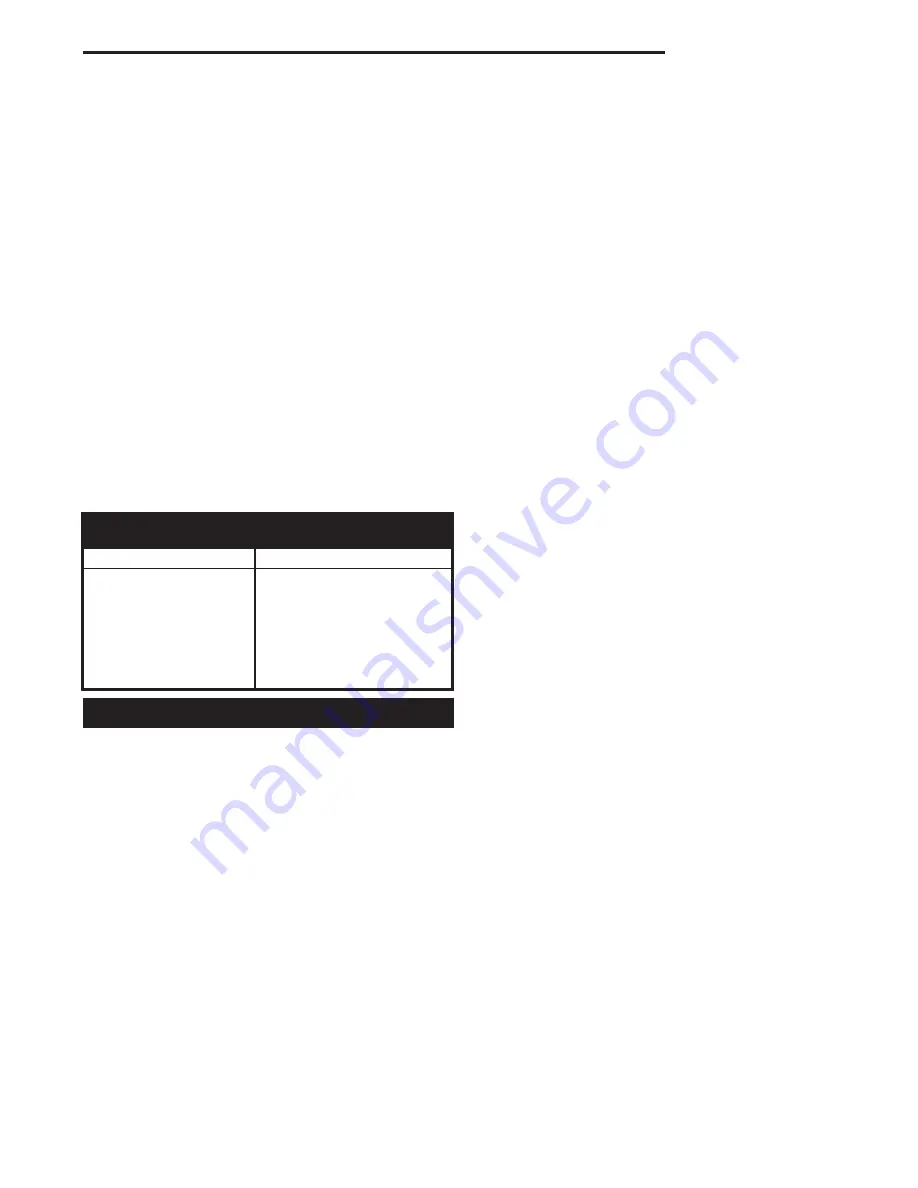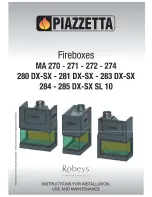
11
Merrimack Large Insert
30004671
How do you know if your draft is excessively high or low?
Symptoms of too much draft include an uncontrollable
burn or glowing-red cast iron. A sign of inadequate draft is
smoke leaking into the room through the stove or chimney
connector joints, low heat, and dirty glass.
In some newer homes that are well-insulated and weather-
tight, poor draft may result from insufficient air in the
house. In such instances, an open window near the stove
on the windward side of the house will provide the fresh
air needed.
When first using the stove, keep track of the settings of
the air controls. You will quickly find that a specific setting
will give you a fixed amount of heat. It may take a week
or two to determine the amount of heat and the length of
burn you should expect from various settings.
Most installations do not require a large amount of com-
bustion air, especially if adequate draft is available.
Do
not for any reason attempt to increase the firing of
your heater by altering the air control adjustment
range outlined in these directions.
Use the following primary air control lever and fan speed
control lever settings as a starting point to help determine
the best settings for your installation.
Merrimack Large Insert control Settings
primary air
air circulation
burn
control
Fan
control
Rate
Setting
Speed
position
High
Fully left
High
Horizontal
Medium
1” from
Low
Turn clockwise
full right
Low
Fully right
Off Turn counterclockwise
Starting and Maintaining a wood Fire
burn solid wood fuel only in the Merrimack Large In-
sert, and burn it directly on the grate. Do not elevate
the fuel. Do not burn coal or other fuels.
Cast iron is a superior material for solid fuel stoves but
it must be treated with respect. It is extremely strong,
but can be broken with a sharp blow from a hammer or
from the thermal shock of rapid and extreme temperature
changes. It is important to temper the cast iron plates with
an initial series of 3-4 break-in fires. The plates expand
and contract with changes in temperature. Minimize
thermal stress by allowing the plates to adjust gradually
during the break-in fires by following Steps 1-3 on the
following page.
waRNINg: operate your Merrimack Large Insert only
with the door fully closed. If the door is left partially
open, gas and flame may be drawn out of the fireplace
opening, creating risks of both fire and smoke.
Follow these guidelines as you start and maintain the
fire, and remove the ashes. Prior to starting a fire with a
cold stove, it is recommended to clear the lower primary
air hole located at the nose of the front brick. To do this,
remove the andiron and lift out the front refractory brick.
Sweep any ash accumulation out of the air slot. Keeping
this slot clear of ash will ensure better performance.
1. Open the primary air control fully.
. Lay several sheets of crumpled newspaper in the
bottom. Place on the paper six or eight pieces of dry,
finely-split kindling. On the kindling lay two or three
larger sticks of split dry wood approximately 1-” (5-
50 mm).
Do not use chemicals or fluids to start the fire. Do not
burn garbage or flammable fluids such as gasoline,
naptha, or engine oil. also, never use gasoline-type
lantern fuel, kerosene, charcoal lighter fluid, or similar
liquids to start or “freshen up” a fire in this heater.
keep all such liquids well away from the heater while
it is in use.
3. Light the newspaper and close the door. Gradually
build up the fire by adding a few 3-5” (76 -17 mm)
diameter splits.
If this is your initial break-in fire, let the fire burn brightly,
but not to excess. Control the fire’s intensity by adjusting
the air control lever. After an hour or so stop adding wood
so that the fire dies out gradually.
For ongoing operation after the initial break-in, continue
to add a few sticks at a time of a progressively larger size.
Be sure to keep the fuel load behind the front grate bar
at all times. Continue until you have a live ember bed at
least 3-4” (76 - 10 mm) deep. This may take an hour or
longer, particularly when the Merrimack Large Insert is
vented to an exterior masonry chimney or when you are
just starting a fire.
You’ll soon find that the insert is
hoT whILe IN opeRa-
TIoN! keep chILDReN, cLoThINg, aND FURNITURe
away. coNTacT May caUSe SkIN bURNS.
NoTe:
Some chimneys need to be “primed,” or warmed
up, before they will draw sufficiently to start a fire. To cor-
rect this situation, roll up a couple pieces of newspaper,
place them on top of the kindling and toward the back of
the stove, light them, and close the doors. This should
heat the chimney enough to initiate a draft.
Once the draft is established, open the front door and light
the rest of the fuel from the bottom. Do not light the main
bed of fuel until the chimney begins drawing, and repeat
the procedure as often as necessary if the initial attempt
is unsuccessful.






































